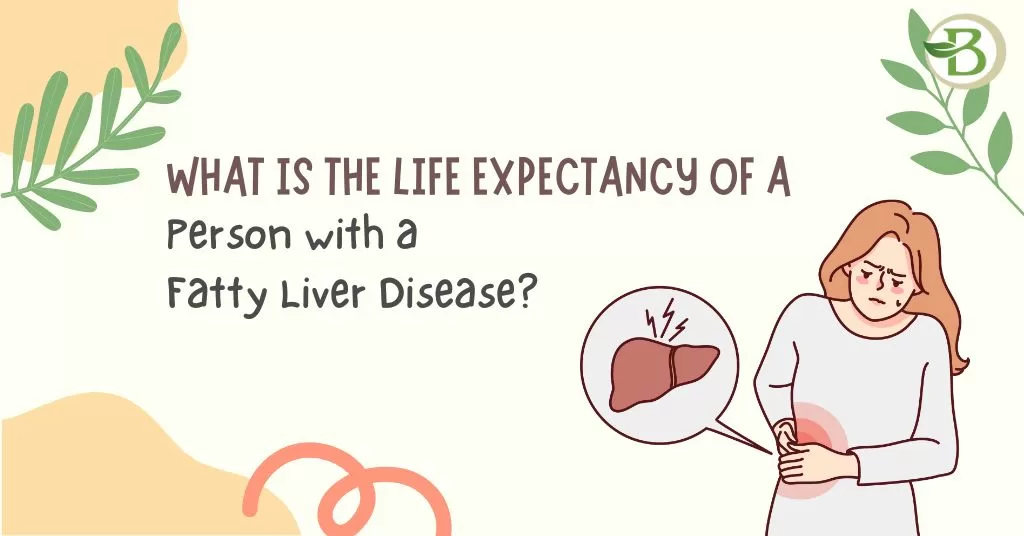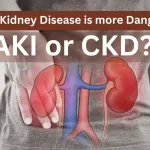Survival Rates with Fatty Liver Disease
Fatty liver disease, a medical condition characterised by excessive fat accumulation in liver cells, is a growing health concern worldwide. It affects millions of people and is becoming increasingly prevalent as obesity rates rise and people live more sedentary lives. If not treated promptly, the illness can cause severe organ damage and reduce overall life expectancy. This blog seeks to give a complete overview of fatty liver disease, covering its development and influence on life span, as well as insights into proper care and preventative efforts.
What is Fatty Liver Disease?
Fatty liver, also named hepatic steatosis, is a chronic disorder in which an inordinate/excessive amount of fat accumulates in the liver cells. This fat accumulation may trigger inflammation and injury to the liver, compromising its normal operations. The liver can handle a limited amount of fat, but you are susceptible to a fatty liver if it accounts for more than 5–10% of its weight.
There are two primary types:
1.Non-Alcoholic Fatty Liver Disease (NAFLD):
The buildup of fat that is not brought on by alcohol consumption is known as NAFLD. It is frequently linked to insulin resistance, metabolic syndrome, obesity, and type 2 diabetes. Non-alcoholic steatohepatitis (NASH), a more acute type of NAFLD that involves inflammation and damage to the organ cells, can further develop into liver cancer, liver cirrhosis, or liver fibrosis.
2.Alcoholic Fatty Liver Disease (AFLD):
AFLD is caused by excessive alcohol intake, which causes fat to accumulate in the liver. Constant alcohol consumption can progress from AFLD to alcoholic hepatitis, fibrosis, and, finally, cirrhosis. Unlike NAFLD, limiting alcohol use can considerably improve liver health.
Progression and Stages:
Hepatic steatosis progresses through several stages, each with varying implications for a person’s health and life expectancy:
1.Simple Fatty Liver (Steatosis):
In this earliest stage, the liver accumulates fat without facing severe inflammation or damage. Many people remain asymptomatic and are uninformed of their illness.
2.Non-Alcoholic Steatohepatitis (NASH):
At this point, damage to the liver cells begins, and the organ becomes inflamed. NASH is a more serious kind of hepatic steatosis that can lead to scarring or fibrosis.
3.Fibrosis:
At this point, persistent inflammation causes scar tissue to form in the liver, yet it still functions effectively.
4.Cirrhosis:
Here, tissue scarring occurs when damaged tissues gradually replace healthy tissues. If overlooked, this scarring may eventually result in liver malfunction and organ failure.
5.Liver Cancer:
Chronic damage can lead to liver cancer, particularly hepatocellular carcinoma. The prognosis for this cancer varies depending on the stage at which it is diagnosed and the effectiveness of medical care.
Life expectancy and Survival rates:
Several factors influence life expectancy with fatty liver disease and the survival rates, such as the fatty liver stages, the existence of comorbidities, lifestyle, and treatment compliance.
1.Simple Steatosis:
The life expectancy of people with simple steatosis is usually similar to that of the general population. However, physical health and lifespan may be impacted by risk factors, including obesity, diabetes, and metabolic syndrome.
2.NASH or Alcoholic Hepatitis:
If untreated, simple steatosis can advance to NASH or alcoholic hepatitis, both of which may cut the duration of life. A balanced diet, weight loss, and giving up alcohol are just a few lifestyle changes that may greatly enhance results along with an early diagnosis. Research shows that NASH patients are more likely than those with simple steatosis to succumb to death from liver-related causes.
3.Fibrosis:
The degree of damage and the success of treatments determine how long a person with fibrosis will survive. With the proper fatty liver medication and lifestyle modifications, fibrosis may be controlled, and the progression to cirrhosis can be halted. The prognosis for early-stage fibrosis is better than that of advanced fibrosis.
4.Cirrhosis:
Cirrhosis has a significant influence on life expectancy, with a median survival rate of around 9-12 years without organ transplant. Compensated cirrhosis, in which the liver can still perform vital tasks, has a better prognosis than decompensated cirrhosis, which causes severe consequences such as fluid retention, hepatic encephalopathy, and variceal haemorrhage. The five-year survival rate for compensated liver cirrhosis is around 80-90%, but for decompensated cirrhosis, it reduces to 50-60%.
5.Liver Cancer:
The prognosis for liver cancer varies greatly depending on the stage of diagnosis and the success rate of medical treatment. Advanced cancer has a terrible prognosis, with a five-year survival rate of 10-20%.
Factors Influencing Life Expectancy
The survival rates of hepatic steatosis patients depend on several factors, such as:
- Stage of Disease: Life expectancy is strongly tied to the stage at which the disease is detected. Simple steatosis usually has a better prognosis than NASH or cirrhosis.
- Comorbid Conditions: Diabetes, obesity, cardiovascular disease, and metabolic syndrome all have been shown to worsen hepatic steatosis and shorten life expectancy.
- Lifestyle Choices: Alcohol consumption, nutritious diet, and physical activity have a substantial impact on the disease’s progression and overall soundness.
- Genetics: The rate at which hepatic steatosis advances and the probability of getting severe diseases can also be influenced by genetic predisposition.
- Medical Management: Delaying the onset of disease and implementing effective treatment strategies, such as modifying lifestyle choices and receiving medication, can increase the life span with fatty liver disease.
Improving Life Expectancy: Strategies and Interventions
Take notes! Your survival rates and overall quality of life can be increased by simply keeping the following things in mind:
- Early Detection and Regular Monitoring: Routine organ function tests and physical examinations make it possible to monitor the course of hepatic steatosis and detect it early.
- Healthy Lifestyle Choices: Consuming a balanced diet, exercising often, and maintaining a healthy weight are essential to managing and stopping the advancement of fatty liver disease.
- Alcohol Moderation: Reducing alcohol consumption is crucial, particularly for people who already have AFLD or are at risk of acquiring it.
- Managing Comorbid Conditions: Controlling high blood pressure, diabetes, and cholesterol can enhance general health and lower the chance of hepatic diseases.
- Medical Treatment and Support: Effective disease control involves heeding medical advice, taking prescribed drugs, and keeping up with follow-up appointments.
Treatment:
Treatment for fatty liver is now possible! You can effectively manage hepatic steatosis by taking the proper treatment and adopting a healthy lifestyle. Getting the appropriate medical care and making positive changes in your day-to-day routine can significantly improve your condition and possibly even find a complete cure for your health issues.
In today’s medical world, Homeopathy offers a potential solution for treating your ailments. Homeopathy, a holistic approach to healing, provides a promising alternative to other methods of treating hepatic steatosis. By focusing on individualised treatment and addressing the underlying fatty liver causes, homeopathic treatment for fatty liver offers a comprehensive and long-lasting cure. Homeopathic remedies aim to restore the organ’s functionality and reverse the damage caused by stimulating the body’s natural healing mechanisms. With an effective homeopathic fatty liver treatment plan, patients can experience significant improvement in their health and ultimately achieve a complete cure for hepatic steatosis.
Why us?
Bharat Homeopathy, a renowned homeopathic hospital in India, specialises in providing natural treatment for fatty liver and other related issues. Our highly skilled hepatologists analyse your unique fatty liver symptoms and medical background to develop a personalised treatment plan. Our approach is centred around addressing the condition’s underlying cause, offering everlasting relief and promoting overall well-being. With our safe and effective homeopathic medicine for fatty liver, we strive to restore normal organ function and enhance overall health.
For appointments and inquiries, contact us now and receive a prompt diagnosis.


